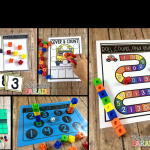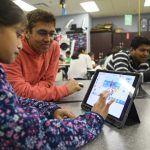
Curiosity is a foundational trait for lifelong learning and success. As Maya Angelou famously stated, “I’ve learned that people will forget what you said, people will forget what you did, but people will never forget how you made them feel.” Fostering curiosity in K-8 students inspires a love of learning and creates an environment where students feel empowered to ask questions, take risks, and explore their interests.
Implement Open-Ended Activities
Open-ended activities allow students to approach tasks creatively, without one right answer. These exercises ignite curiosity by letting kids follow their interests and work in their own style. For example, assign an art project based on the theme “What makes you unique?” rather than requiring students to replicate a specific image. During science class, try posing an engineering challenge like “How can we build the tallest tower using only marshmallows and spaghetti?”
You can also encourage curiosity through “genius hour” – allowing students to spend class time researching and creating a project about any topic they want. This shows them that their interests matter in school. Leave time for students to present their genius hour findings, reminding peers that being curious involves listening to each other.
Ask Open-Ended Questions
Pose questions that spark deeper thinking, without simple yes/no answers. For instance, during a lesson about civil rights leaders, go beyond asking “Who was Martin Luther King Jr.?” to prompts like “Why do you think Martin Luther King Jr.’s message resonated with so many people?”
Let students know there are no wrong answers to thought-provoking questions. Validate creative perspectives by responding positively to ideas: “Interesting point, I never considered that.” This motivates kids to keep exploring possibilities without fear of being “wrong.”
Encourage Student Questions
Curiosity thrives when students know they can ask questions without judgement. Set expectations on day one by telling students there are no silly questions in your classroom – you will take every query seriously.
When a student poses a question, thank them for speaking up and dig into it with the class rather than immediately answering yourself. Ask “What do others think about that question?” This shows students their input is valued in the search for understanding.
Incorporate Student Interests
Show kids their passions matter by relating curriculum to their hobbies when possible. For example, a student who loves soccer might research friction and gravity to understand the physics of corner kicks. A student fascinated by fashion design could study textiles and sewing methods. Connecting learning to personal interests lights a spark of curiosity.
You can also survey students throughout the year about their favorite books, movies, historical periods or science topics. Incorporate highly requested subjects into lessons when feasible to boost engagement.
Allow Time for Exploration
It’s human nature to be curious, but packed school days leave little time for stretching intellectual muscles. Build in opportunities for curiosity and discovery by scheduling time for hands-on exploration.
For instance, set aside 20 minutes each week for makerspace activities, where students can play with materials like clay, Legos, art supplies and craft items to design creations while developing persistence, problem solving skills and creativity.
During technology class, provide open-ended design challenges using new tools like 3D printers or robotics kits. Allow time for trial-and-error tinkering. This ingenuity sparks curiosity about how things work.
Take Students on Experiential Field Trips
Experiential learning outside the classroom provides powerful opportunities to spark curiosity. Immerse students in hands-on experiences that expose them to new ideas.
For example, an aquarium visit could supplement ocean life lessons with up-close encounters with jellyfish and sharks. A nature preserve can turn ecology studies into sensory adventures observing wildlife firsthand. Museums bring history, art, music and science to life through exhibits and workshops.
After field trips, have students create projects inspired by the experience, such as artworks, poems or short stories. This helps reinforce curiosity-driven learning.
Convey Passion and Enthusiasm
Kids pick up on adults’ energy. If you demonstrate passion about teaching, with encouragement like “I can’t wait to show you this amazing topic today!” it gets students revved up to participate. Share your own curiosity by remarking on how fascinated you are by specific subjects. This enthusiasm rubs off on students, sparking their interest.
Also, display contagious excitement when students ask thoughtful questions or present creative ideas. React with phrases like “I love how your mind works!” Kids who feel applauded for their curiosity will continue seeking knowledge.
Inspire Kids to be Innovators
Today’s K-8 students will someday tackle major world issues like climate change and inequity. Seeding innovation and problem solving from an early age prepares them to meet these challenges. Empower students’ curiosity about how to build a better future.
For instance, assign design thinking projects that require ideating creative solutions, like reimagining school lunch menus to reduce food waste, developing energy-efficient homes, or improving accessibility for disabled students. Guide them to research issues, brainstorm and test solutions.
Highlight young inventors and change-makers who followed their curiosity to help others, like Marley Dias, who launched a campaign to donate multicultural books to schools after noticing underrepresentation. Marie Curie’s passion for science led to breakthrough discoveries about radiation. Stories like these inspire kids to believe their curiosity can make a difference in the world.
When students feel empowered to seek knowledge, they gain fuel for academic and lifelong success. A curious mindset opens doors to discovery and possibility. So foster inquisitiveness and wonder throughout K-8 education – the benefits last a lifetime.















